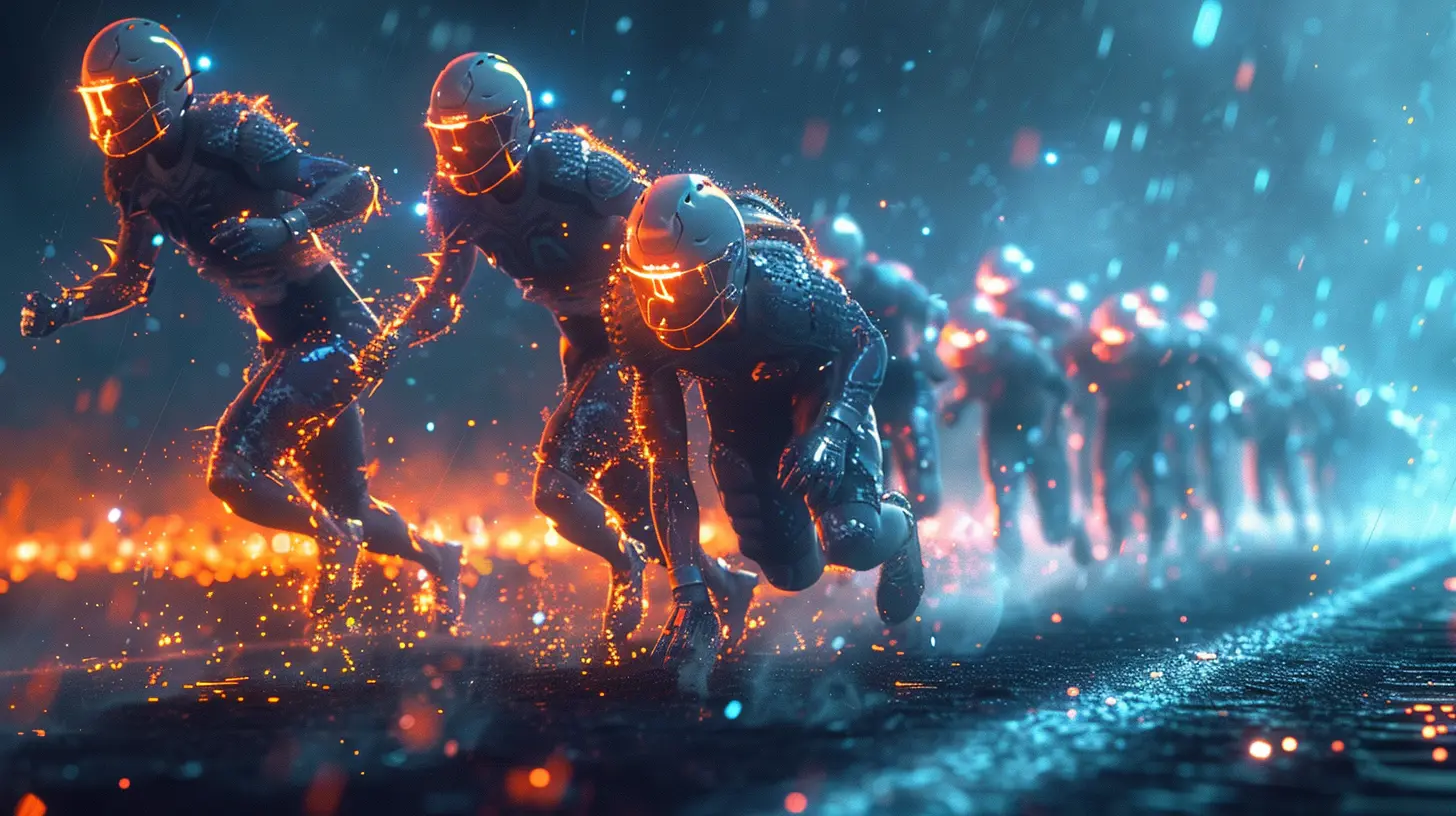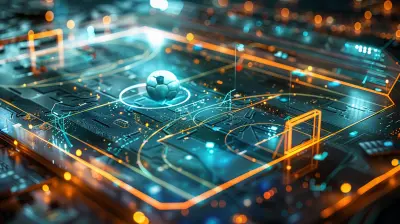The Role of AI in Enhancing Opponent Difficulty in Sports Games
18 November 2025
Sports games have come a long way, haven’t they? Gone are the days when we could easily predict every move our virtual opponents made or spam one button to win every match (looking at you, early FIFA games). Over the years, artificial intelligence (AI) has quietly become the unsung hero of sports games, making things more challenging, immersive, and fun. But have you ever thought about how exactly AI makes your opponents feel more "real"? Why is it that sometimes it feels like you're playing against an actual person? Let’s dive in and uncover the role of AI in making sports games smarter, tougher, and way more engaging.
A Quick Look at AI in Gaming History
Back in the day, gaming AI was... well, as basic as it gets. It wasn’t really “intelligent”—more like robots following pre-programmed patterns. Think Pong or the early iterations of Madden. The virtual opponents weren’t “thinking”; they were just executing simple instructions like “move left” or “block if ball approaches.” Sure, it was fun back then, but once you figured out the pattern, the challenge was gone.Fast-forward to today, and the AI in sports games is on another level entirely. It’s not just about executing pre-set movements anymore. With massive advancements in machine learning and computational power, AI is now capable of adapting, predicting, and even countering your every move. Yep, your game has essentially become a chess match against the machine—except instead of pawns, you’ve got athletes.
How AI Works in Sports Games: Behind the Scenes
Let’s break it down. AI in sports games isn’t some magical force; it’s all about algorithms and programming that simulate human-like decision-making. Developers use a combination of techniques like:1. Behavioral Algorithms
AI opponents use behavioral algorithms to read the current state of the game and respond to it "intelligently." For example, in FIFA or NBA 2K, AI defenders might adjust their positioning based on your offensive plays. They’re not just standing there randomly—they're actively analyzing your patterns and trying to shut you down.2. Machine Learning Models
This is where things get really interesting. Some modern games use machine learning to train AI opponents. Developers feed the program tons of data from real games—what players do in different situations, how they react to specific challenges, etc. The AI then “learns” from this data and uses it to make smarter decisions. Basically, it’s like teaching the AI how to think and play like a pro athlete.3. Dynamic Difficulty Adjustment
Ever notice how some sports games feel harder the better you play? That’s no coincidence—it’s AI at work. Dynamic difficulty adjustment (DDA) allows the game to scale the challenge in real-time. Play poorly, and the AI might go easy on you. Start dominating, and suddenly the opponent’s defense is tighter than ever. It keeps the game balanced and exciting, no matter your skill level.
Making Opponents Feel More Human
Alright, so we know the tech behind it—but how does this translate to gameplay? How does AI make our virtual opponents feel like flesh-and-blood competitors?1. Predictive Playstyles
Imagine you’re playing Madden, and your running back has been torching the defense all game. Suddenly, the AI starts blitzing more and clogging the lanes. That’s predictive playstyle at work. The AI isn’t just reacting to what you’ve already done—it’s predicting what you might do next.This kind of behavior mirrors real-life sports. Athletes and coaches analyze their opponents and adjust strategies mid-game. AI mimicking this creates a more realistic and intense gaming experience.
2. Emulating Human Errors
Nobody’s perfect—not even AI. Modern sports games intentionally program AI to make mistakes, just like real athletes. Maybe the goalie misjudges a shot, or a defender mistimes their jump. These small imperfections make the experience feel more authentic. After all, if the AI was perfect, it’d be frustrating and no fun to play against.3. Adaptive Tactics
Remember when you could spam one move to score in every match? Not anymore, thanks to adaptive AI. If you keep exploiting the same strategy, the AI will catch on and shut it down. For example, in FIFA, if you keep cutting inside with your winger, the AI might double-team you or force you out wide. It’s like the game is saying, “Not today, buddy.”
AI in Online vs. Offline Modes
This is where things get a bit tricky. In online multiplayer modes, your opponents are real people, so AI isn’t as heavily involved. However, AI still plays a role in areas like:- Matchmaking: AI systems use algorithms to pair you with opponents of similar skill levels. Nobody wants to face a pro on their first day, right?
- Assisted Gameplay: Even in online matches, AI helps control your teammates who aren’t directly controlled by you. For example, your AI defenders in FIFA still need to position themselves intelligently to stop your opponent’s attack.
Offline modes, on the other hand, rely entirely on AI to simulate opponents. This is where all that adaptive, predictive, human-like behavior comes into play.
Examples of AI in Popular Sports Games
Let’s look at some specific examples to see how AI is enhancing opponent difficulty in the biggest sports franchises:1. FIFA Series
FIFA’s AI has evolved dramatically over the years. The introduction of “Tactical Defending” and “Player Personality” systems means that AI opponents no longer feel robotic. Each team has its own playing style—so facing Barcelona feels very different from facing Burnley. Even individual players exhibit unique traits, like Ronaldo’s signature dribbling or Messi’s vision for killer passes.2. NBA 2K Series
NBA 2K’s AI is all about realism. Opponents execute plays, adjust defensive schemes, and even double-team your stars if you’re lighting them up. And let’s not forget the crowd AI—change the momentum of the game, and you’ll hear the crowd roar or jeer accordingly.3. Madden NFL
Madden’s AI has mastered adaptive play-calling. Keep running the same offensive play, and the defense will adjust to shut it down. Plus, AI quarterbacks mimic their real-life counterparts, so don’t expect a slow pocket passer to scramble like Lamar Jackson.The Future of AI in Sports Games
So, what’s next? If you think AI in sports games is impressive now, just wait—it’s only going to get better. Here are some exciting possibilities for the future:- Deeper Machine Learning: Imagine AI that not only learns from pre-programmed data but also from you. Over time, it could adapt to your personal playing style, offering an even greater challenge.
- Better Emotional AI: Developers are already experimenting with giving AI emotions. Picture a football game where your opponent panics during clutch moments or gets overly aggressive when they’re losing.
- More Realistic Team Dynamics: AI could simulate not just individual players but also team chemistry. For example, if a star player gets injured, the team might struggle to perform as well.
The Double-Edged Sword of AI
Of course, it’s worth mentioning that not everyone loves hyper-smart AI. For some players, the challenge can feel overwhelming or even unfair. After all, not everyone wants to sweat during a casual gaming session. This is why many games include difficulty sliders, giving players control over how “smart” the AI should be. Balance is key, and developers continue to walk that fine line between making the game fun and making it frustrating.Wrapping It Up: AI Is Changing the Game... Literally
In a nutshell, AI isn’t just about making sports games harder—it’s about making them better. By creating opponents that think, adapt, and even mess up like real humans, AI transforms these games into something much more immersive and rewarding. Whether you’re battling the CPU in a high-stakes playoff series or just playing a quick match, AI is the silent MVP working tirelessly behind the scenes to keep you on your toes.So next time you curse the AI for intercepting that perfect pass or blocking what should’ve been an easy layup, remember: that’s exactly what makes the game so satisfying. After all, what fun is winning if there’s no challenge?
all images in this post were generated using AI tools
Category:
Sports GamesAuthor:

Leandro Banks

